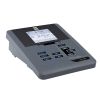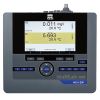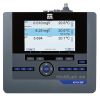YSI TruLine Chloride Electrode
Features
- Solid state ISE
- Double junction reference
- 1.8-35,500 mg/L range
- Free ground shipping
- Expedited repair and warranty service
- Lifetime technical support
- More
The TruLine series of laboratory ISEs consists of 15 electrodes that have an integrated reference, eliminating the need to have a separate reference half-cell. Each TruLine ISE has a refillable double-junction reference, resulting in a long electrode life and exceptional measurement reliability. TruLine ISEs can be connected to any ISE instrument featuring BNC connection, including the YSI 1320. Reference/electrode fill solution, ionic strength adjustor, and small bottle of standard are included with each ISE.
- Wide selection of 15 electrodes for 16 different parameters
- 4 sensor technologies - gas sensing, polymer/PVC membrane, solid state, and glass sensor
- Combination (i.e. full-cell), refillable electrodes with double-junction reference
- BNC connection, 1m cable
- Made in the U.S.A
- Reference/electrode fill solution, ionic strength adjustor, and small bottle of standard included with each ISE
- 12 month warranty for solid state, glass sensor, and gas-sensing ISEs
- 9 month warranty for ISEs with polymer/PVC membrane
- (1) Electrode with 1m cable
- (1) Small bottle of reference/electrode fill solution
- (1) Small bottle of ionic strength adjuster
- (1) Small bottle of standard solution
In The News
Wave Sensors Integration with NexSens Buoys: A Cutting-Edge Solution for Wave Measurment
Real-time wave data supports accurate weather prediction, safe and efficient maritime operations, and provides valuable safety and operating condition information for recreation and commercial fishing. Understanding wave dynamics also helps with the design of protective coastal structures like seawalls, breakwaters, and jetties. It also supports better prediction of their impact on sediment transport and coastal geomorphology. Wave data is a key factor in qualifying and designing offshore wind farms and harnessing kinetic energy for electrical generation. It helps with the understanding of ocean-atmosphere interactions and contributes to studies of sea-level rise and climate change impacts.
Read MoreSpring 2025 Environmental Monitor Available Now
In the Spring 2025 edition of the Environmental Monitor, we highlight partnerships across the world and the importance of collaboration between government agencies, universities, environmental groups, local communities, and other stakeholders. From great white shark research in Cape Cod to monitoring fisheries in Lake Erie, this latest edition underscores partnerships that connect stakeholders in a watershed through environmental data. With an emphasis on data sharing, a combination of real-time and discrete sampling keeps the public and partners informed of environmental conditions. Our writers also sought out science professionals dedicated to working with peers within and outside of the environmental sector.
Read MoreMonitoring Mariculture in the Gulf of Alaska
The mariculture industry in the Gulf of Alaska has been steadily growing in recent years, guided by ongoing research to help refine farm location and cultivation practices. A subset of aquaculture, mariculture focuses on rearing organisms in the open ocean. In Alaska, finfish farming is illegal, so most farms cultivate kelp, oysters, or a combination of the two. These small, locally operated farms started popping up in the Gulf of Alaska in the early 1990s, when shellfish farming first became legal. Kelp farming did not begin to catch on in the state until 2016. Many of the coastal areas that have grown interested in mariculture are historically commercial fishing communities.
Read More













